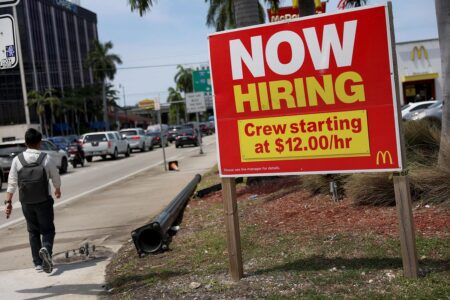Egor Karpovich, CEO of Travel Code. We are a corporate travel management platform that helps businesses save on every trip.
In the business world, travel is a necessity. Almost every industry has at least some demand for regular travel. While it might be important, business travel is also time-consuming, tiring and expensive.
Leisure travel is a little different. Sure, it can be expensive, but most people don’t think of it as tiring or time-consuming. Instead, they look forward to their personal trips. These vacations are a chance to see amazing sights, relax and spend time with family and friends.
However, as the CEO of a company that offers B2B travel management solutions, I’ve found that these two types of travel can actually work together nicely. This article will take a closer look at an innovative way to think about the intersection of business and personal travel.
Introducing Bleisure Travel
The term “bleisure travel” can be used to define blended trips that contain elements of both business and leisure. Traditionally, these two types of travel have been kept entirely separate, and it has been frowned upon to mix one with the other.
Times are changing. As long as bleisure trips are properly planned and employers set clear expectations, this kind of traveling can be more efficient and make for a richer experience of the world.
Let’s use an example to highlight how this can play out in the real world. Imagine a business professional based in the United States who needs to travel to Paris for a conference. She has always wanted to see Paris but will be there only for business purposes. A traditional business trip wouldn’t necessarily allow for a classic tourist experience to unfold at the same time.
Bleisure travel works differently. With this approach, the business part of the trip could be planned as usual—but a few days could be tacked on to the trip after the conference for sightseeing and culinary experiences in the City of Light. Rather than having to travel all the way back to Paris for another trip, the professional in this example can just stay and have a memorable time before returning home.
Many Benefits To Be Enjoyed
The convenience of bleisure travel should already be clear from the example above. It’s easier to make one trip to Paris than it is to make two. But that’s not the only benefit that comes along with this travel strategy:
• New Experiences: Simply put, employees who travel for work will be able to have experiences through bleisure trips that they wouldn’t have had otherwise.
• Better Work-Life Balance: It’s easy to get caught up in the frenetic pace of professional life and never slow down to enjoy the important things. Bleisure brings a nice balance and perspective to a lifestyle that can easily be overwhelming otherwise.
• Improved Productivity: Research suggests (paywall) that “work-life support” (a category I believe bleisure travel could fall into) can improve productivity.
Watch Out For The Pitfalls
The bleisure picture looks pretty rosy so far, and there is certainly a lot to like about this model. Nothing is perfect, however. There are some pitfalls that you’ll need to avoid if you’re going to implement bleisure travel successfully in your organization.
First, there will be a lot going on during these trips. Managing professional responsibilities while also enjoying personal travel experiences can be tricky, especially at first. Good time management is critical, and it’s critical for the employer and traveling employee to have a detailed plan in place before the employee departs.
There is also an expense reporting element to be considered here. Some expenses incurred during the trip will be the responsibility of the business. Others will be assigned to the individual. Having a clear delineation between the two is important so the business isn’t billed for things that were actually part of the leisure experience.
Developing a transparent reporting system can help on this front. Having a tool or internal system available that makes managing expenses easy and gives management quick visibility will help avoid any problems that might arise in this area.
Three Keys To A Successful Bleisure Experience
Putting bleisure practices into action in your organization isn’t difficult—you can start right away. To make sure you get started on the right foot, these three keys should play a role.
• Plan effectively. This is where it all starts. I can’t overstate the value of planning in this process. Detailed plans should be in place for what the work objectives are during the trip, when employees will meet those and what time they’ll allocate for leisure activities. Putting as many details as possible in place ahead of time is going to enable you to avoid the potential problems discussed above.
• Start small. You don’t have to dive right into adding week-long vacations onto business trips. It might be easier to start small and get comfortable with this concept. That could mean simply allowing employees to add a day to a business trip to allow for some exploring of the local area before flying home.
• Communicate openly. As with everything else in life, communication is the key to successful bleisure travel. Everyone in the organization should be on the same page regarding what is allowed, what isn’t allowed and how trips should be planned and managed. When solid communication is in place, bleisure trips can be something that adds to the experience of each employee rather than becoming a point of contention.
Exploring This Opportunity
Are you or your employees growing tired of the frequency and duration of your business trips? Do you feel like there is more you could be doing with that time while still accomplishing your professional goals? Bleisure travel may be the answer. A bit of careful planning and the right help from experienced professionals can bring these rewarding trips to life. Look over your or your employees’ schedules today and spot an opportunity to put bleisure into action.
Forbes Business Council is the foremost growth and networking organization for business owners and leaders. Do I qualify?
Read the full article here











